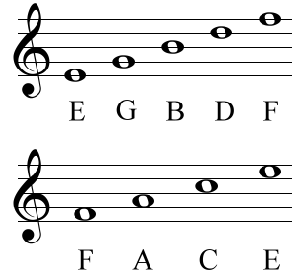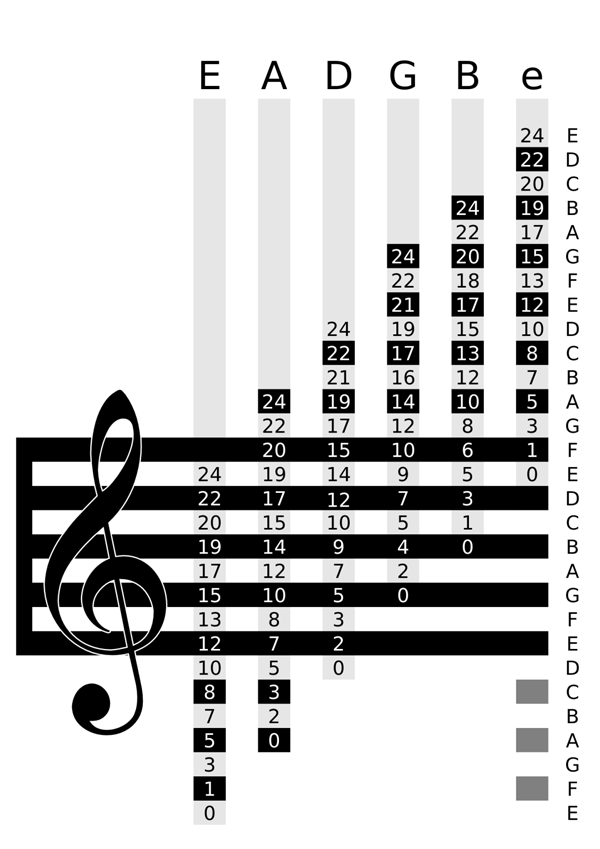One of the challenges for guitar players wanting to learn how to use standard music notation is knowing where on fretboad to play what’s written down on paper. It’s one thing to read music notation and another thing to then play it on the guitar.

This is why tablature is so popular with guitar players, because it shows them exactly where on the fretboard they should play. The downside is that tablature doesn’t convey time, tempo and rythm.
The following diagram is a great tool for bridging the gap between standard music notation and tablature.
Key
- The letters along the top from left to right are the note names of the strings from the thickest to the thinnest string.
- The numbers indicate the fret location, from 0 (not fretted) all the way up to the 24th fret (if your guitar spans two octaves).
- The letters down the right hand side indicate the note name at that particular fret number and string. This example is for the Key of C.
As an example lets see where we can play the notes from the above diagram. E, G, B, D, F. Which we can remember with the mnemonic Every Good Boy Deserves Food.
The E is on the bottom line of the musical staff. If you look on the diagram below you can see there are three numbers on the lowest of the five black lines. The numbers are the 12 on the E string, the 7 on the A string and the 2 on the D string.
This means that the E on the musical staff above can be played at the 12th fret of the low E string, the 7th fret of the A string and the 2nd fret of the D string.

These note locations aren’t something you’ll be able to learn overnight. My advice is to concentrate on learning the note locations for the common chords that you play so that you can recognise them when they’re presented to you in standard music notation. For example learn the music notation for these chords.
After that you should start paying attention to the notation of songs that you’re learning to play, not just the tablature. Many song books feature both tablature and standard notation which you can use as a good opportunity to improve your sight reading.


